Report on the Sightseeing Tour "Tumuli Tour"
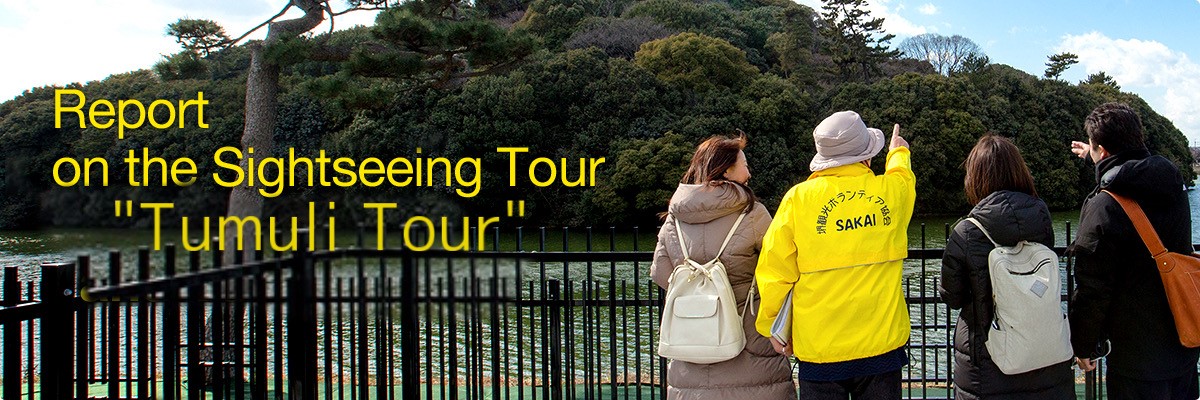
~ Commemorating National Recommendation as a World Heritage Site ~
The Mozu Tumuli Cluster walking tour, as led by a tumuli specialist
In 2017, the Mozu Tumuli Cluster in Sakai acquired a national recommendation as a World Heritage Site. To commemorate this achievement, a walking tour was created in which a sightseeing guide takes participants around the highlights of representative tumuli and viewing spots. Here's a report from someone who took the full tour.
{{ // BLOCK END }}
Discover the appeal of tumuli with your own two feet.
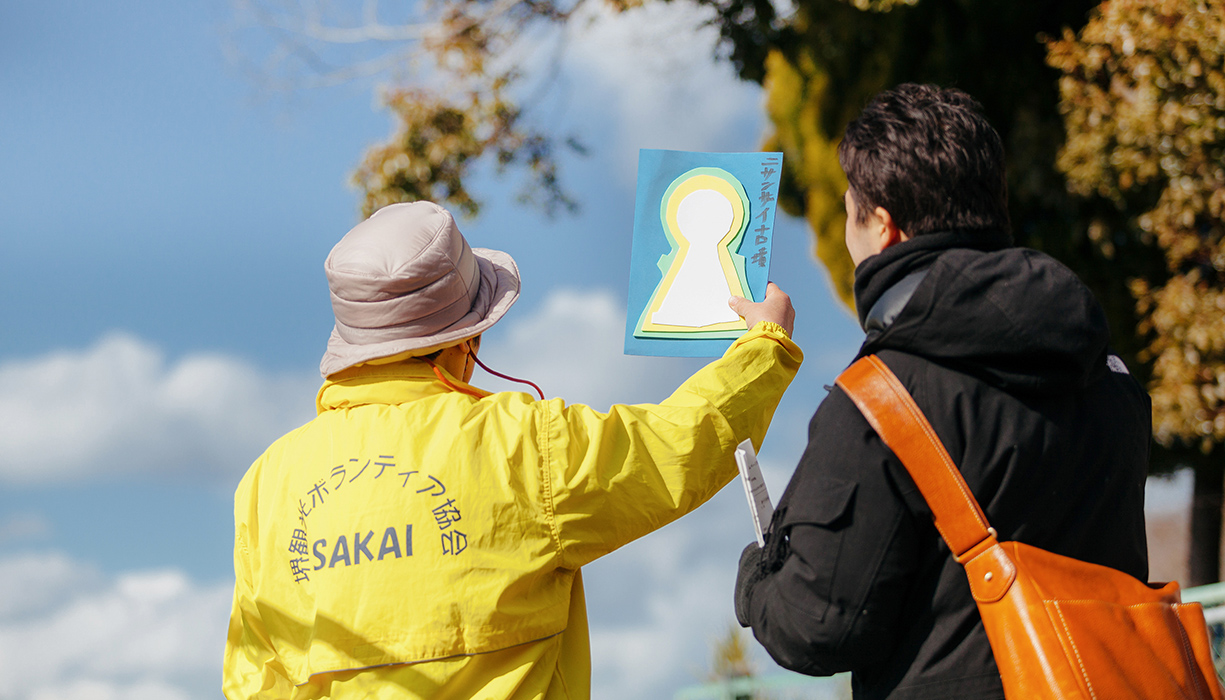
{{ // BLOCK END }}
The tumuli guides all belong to the Sakai Volunteer Tourism Association, known for their yellow staff jackets. On the day of our visit, we were guided by Michiyo Taruno, a tumuli fan for more than 40 years. "Tumuli are most interesting when viewed from the ground!" she enthusiastically explained, heightening our own expectations for the tour.
Ms. Taruno went on to explain how tumuli were tombs for important people, and were created in Japan between the 3rd and 6th centuries. From among these, construction of those in the Mozu Tumuli Cluster, which includes the massive Nintoku-Tenno-Ryo Tumulus, was concentrated in the second half of the 4th century through to the 5th century, the period during which both the culture and technology of tumuli were at their peak. There were originally more than 100 tumuli in the cluster, but currently 44 remain. "If you walk them on your own two feet, you come to understand the structure and subtle placement of the tumuli. You'll also find the joy of encounters with small tumuli that don't appear in any guidebooks," Ms. Taruno explains.
{{ // BLOCK END }}
Mastering the key to tumuli spotting - "view from the corner of the front section."
Ms. Taruno started by taking us around the Nisanzai Tumulus, known as the most beautiful tumulus in Japan, the Gobyoyama Tumulus, and the Itasuke Tumulus, teaching us the best points to view them from. "If you stand on the corner of the front section of a keyhole-shaped tumulus and look out over it, you can see the full shape," Ms. Taruno explains. We proceed to actually do so, and the "neck" section where the round and straight parts intersect can indeed be clearly seen. The fact that "at the time of construction stones were laid across the surface, meaning no trees grew on the tumuli" is also a big surprise. Amid the spreading forests of the time, the massive stone structures must have been quite a startling sight.
{{ // BLOCK END }}
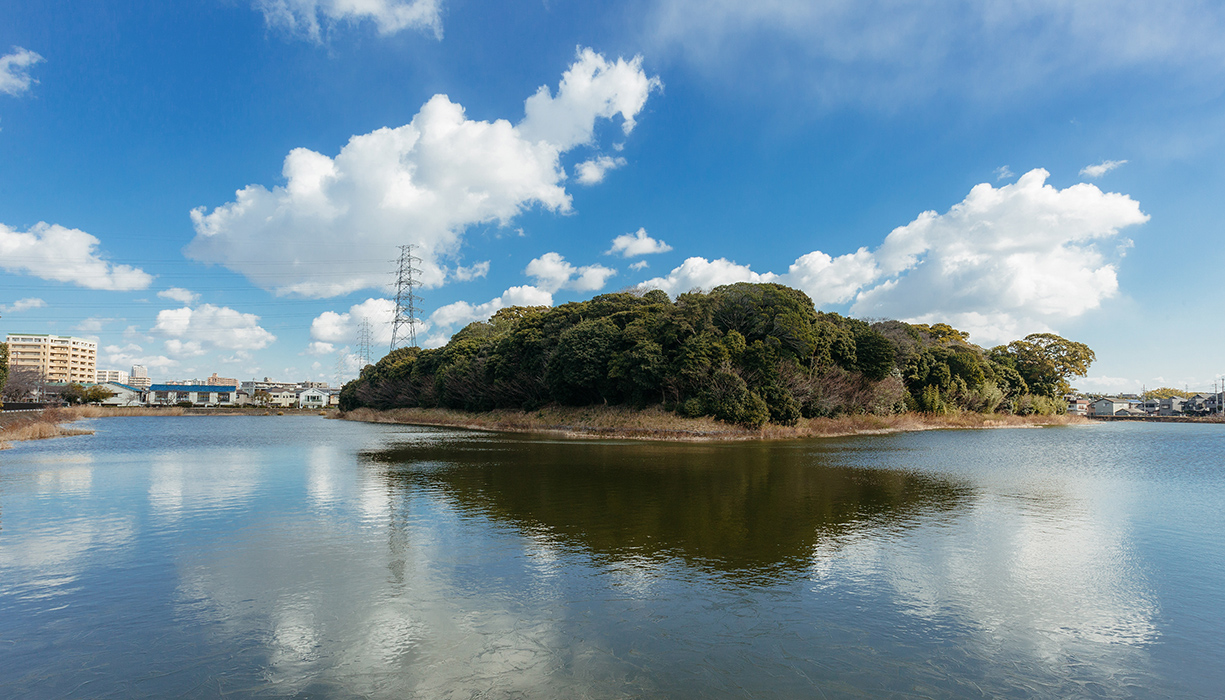
{{ // BLOCK END }}
"The tumuli were created by piling up earth from the surrounding area, which created moats in the vicinity. Many of these moats now have beautiful cherry trees or crimson leaves in the fall, making them popular spots for taking a walk," Ms. Taruno explains. She also explains that the large tumuli are created in three layers, and that these layers can be confirmed with the naked eye.
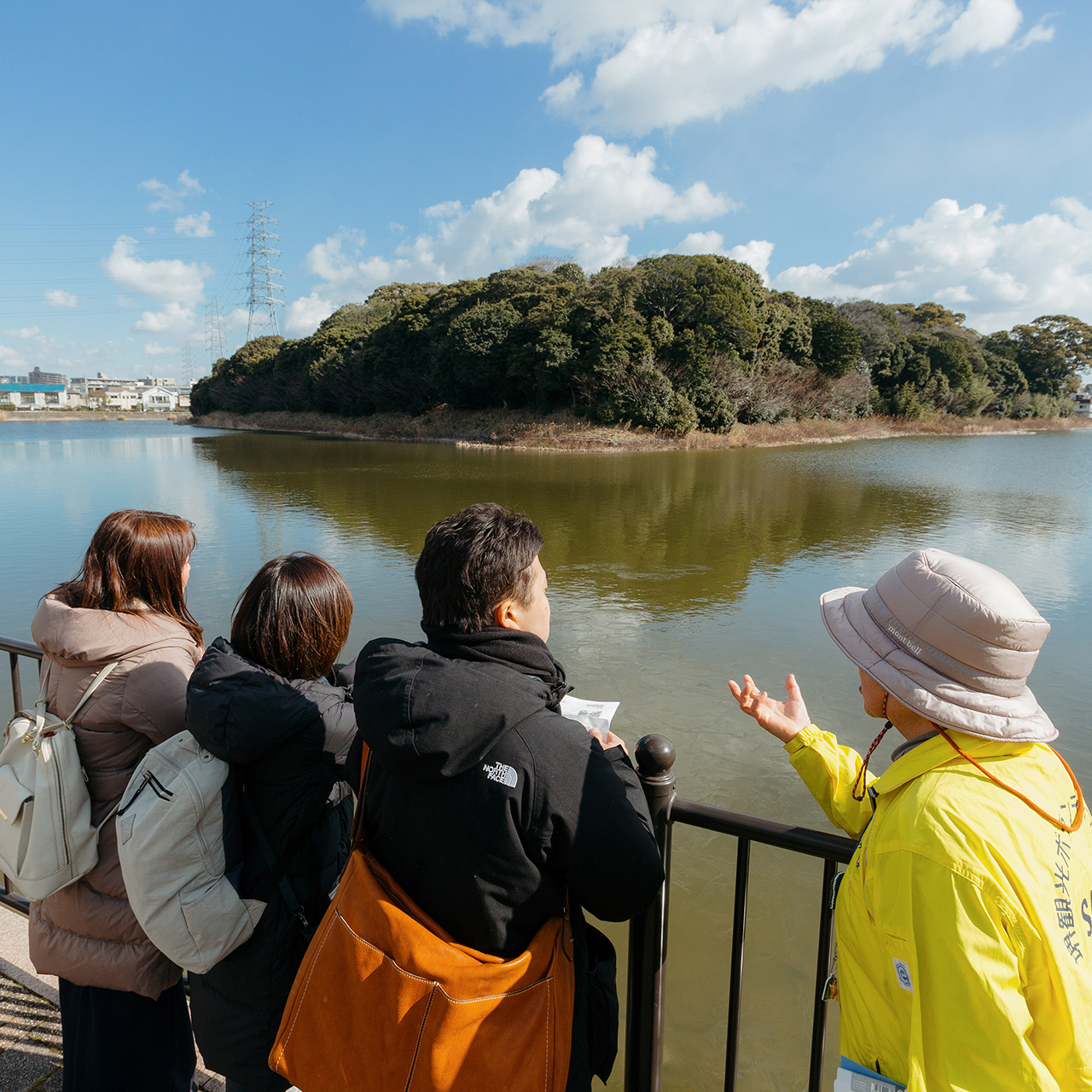
{{ // BLOCK END }}
This is the Itasuke Tumulus. The broken bridge serves a purpose as something of a memorial, a symbol of a citizens' movement that protected the tumulus from destruction. It has now become the playground for a family of raccoon dogs that live inside the tumulus.
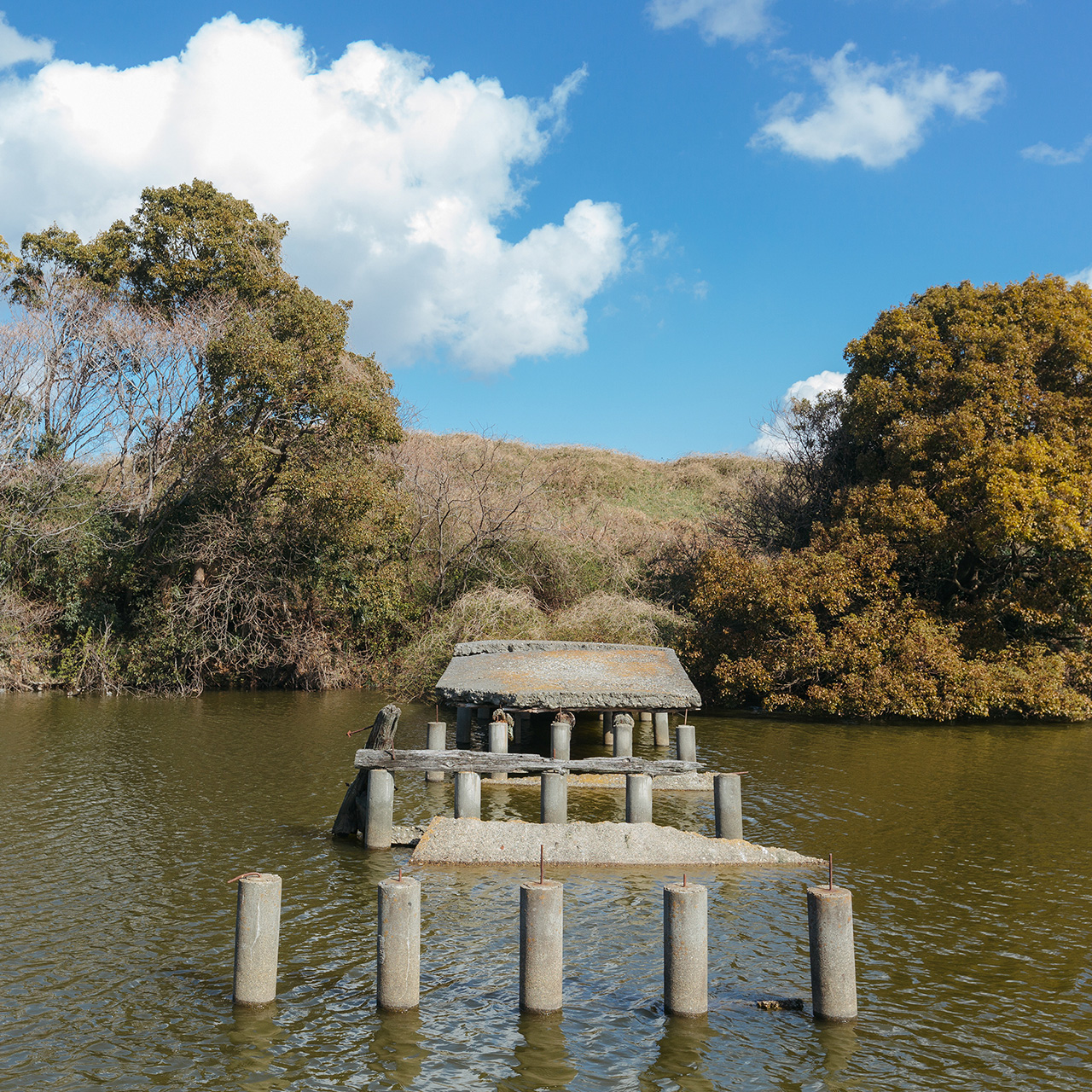
{{ // BLOCK END }}
The spectacular scenery of the Richu-Tenno-Ryo Tumulus, the third largest tumulus in Japan.
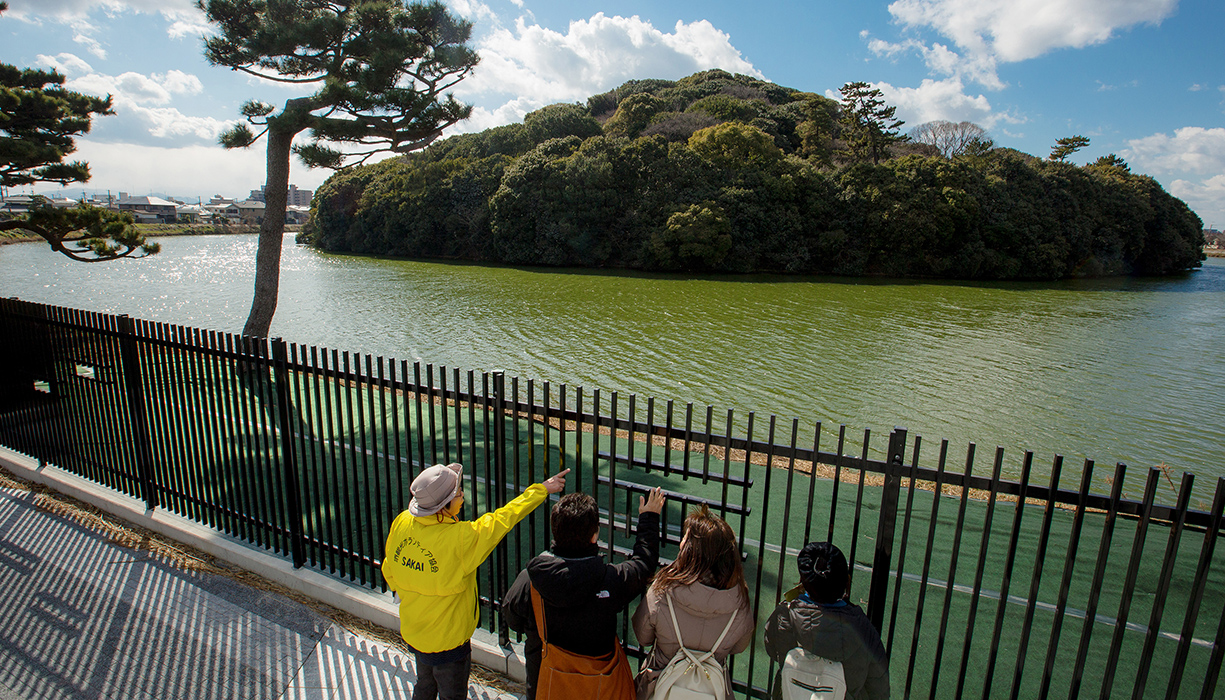
{{ // BLOCK END }}
Our next destination is the Richu-Tenno-Ryo Tumulus, the third largest tumulus in Japan. "Tumuli in which an emperor is interred, known as "Tenno Ryo," always have a place for prayer in front of them. They are very serene places, so please do go and take a look," Ms. Taruno recommends. A further recommendation is the "view spot" on the rear round side, with a view that's enough to take your breath away.
{{ // BLOCK END }}
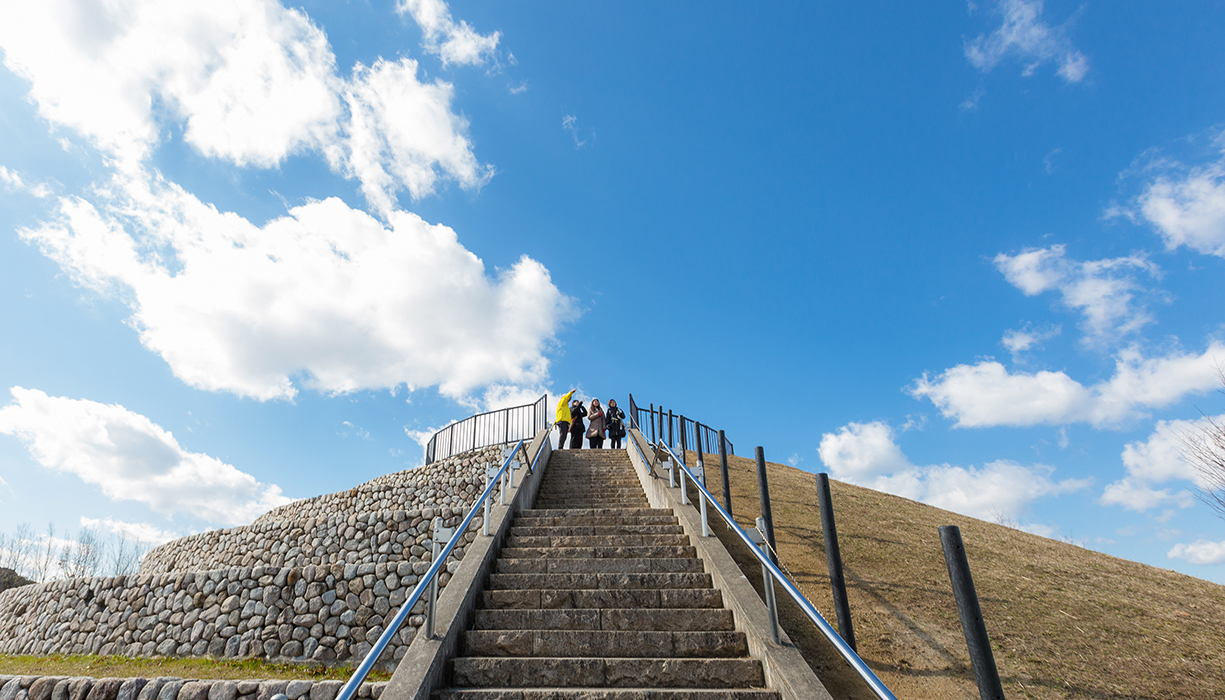
{{ // BLOCK END }}
After taking a break for lunch, we headed to the "Peace Forest" in one corner of Daisen Park. The unique stone observation deck here is a recreation of the circular tumulus that once stood here. It allows you to really imagine what the original tumulus must have looked like.
{{ // BLOCK END }}
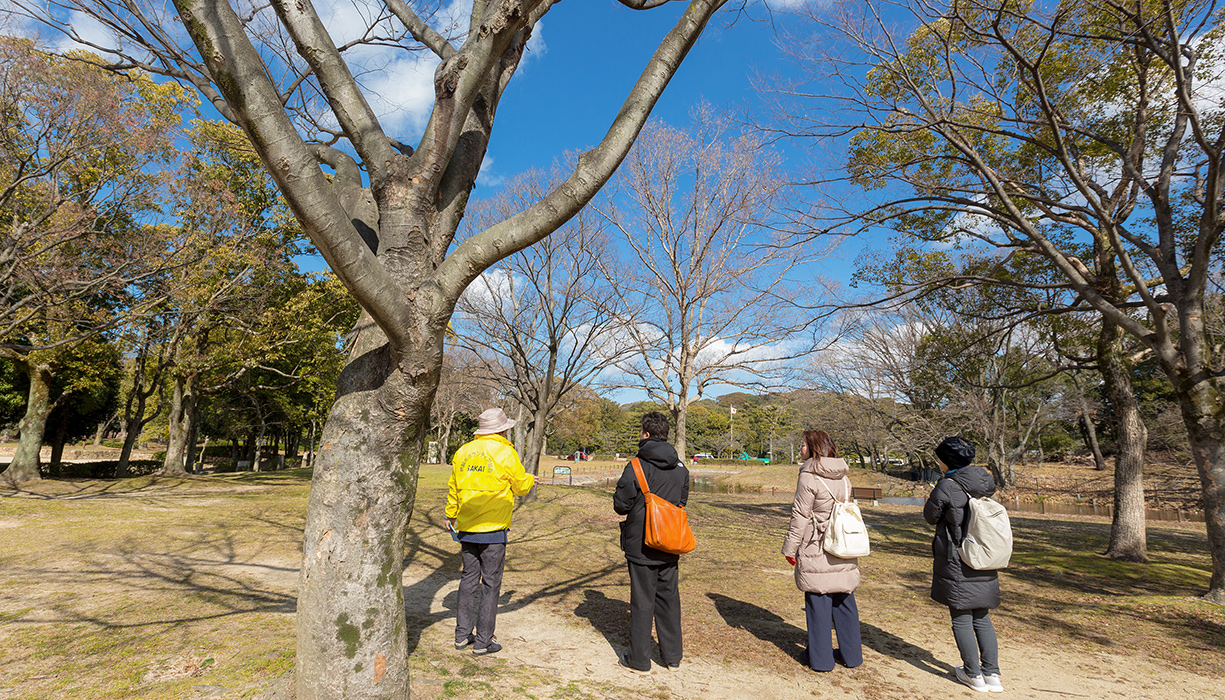
{{ // BLOCK END }}
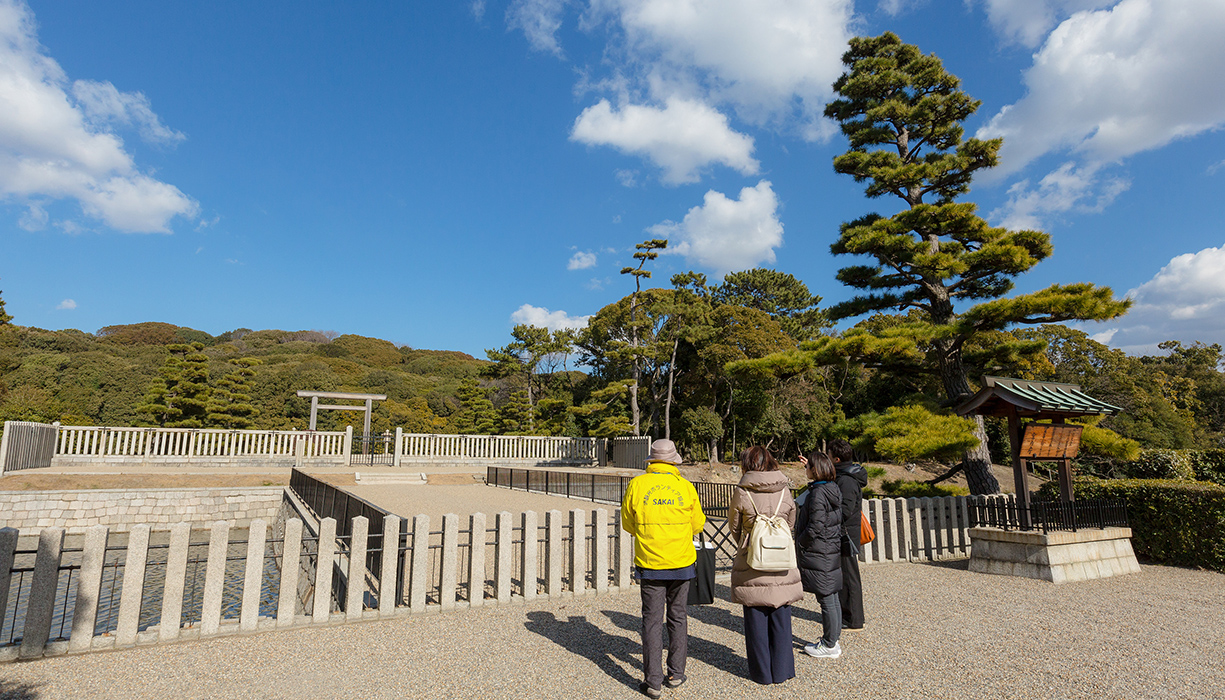
Finally, we visited the Nintoku-Tenno-Ryo Tumulus. The impeccably clean prayer place had quite the solemn atmosphere. "Calculations suggests that even if 2,000 people were working on it every day, it would still have taken longer than 15 years to complete," comments Ms. Taruno. The sheer scale was quite overwhelming.
Including the break for lunch the tour took five and a half hours, with a distance walked of approximately 7km. Our day with the tumuli turned out to be plenty of fun, full of unexpected surprises and discoveries.
As these are private tours, they can be casually enjoyed by just you and your friends. They come highly recommended for anyone who wants to learn more about Japanese tumuli culture.
{{ // BLOCK END }}
Tour Guide: Sakai Volunteer Tourism Association
Reporter / Text: Noriko Yamaguchi / Photos: Yoshinori Yamazaki
{{ // BLOCK END }}